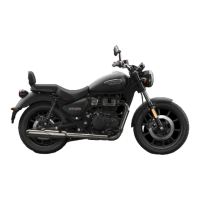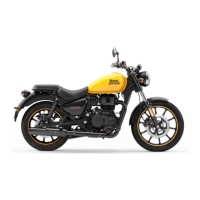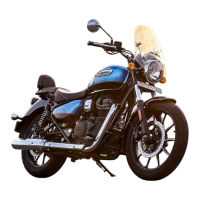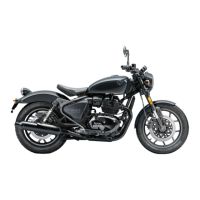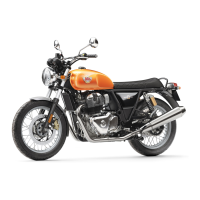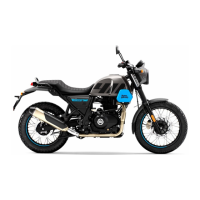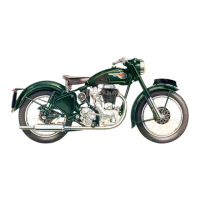What to do if my Royal Enfield Super Meteor 650 engine is too hot?
- AAmber BrooksJul 29, 2025
If the engine of your Royal Enfield Motorcycle overheats, switch it OFF and allow it to cool down.
What to do if my Royal Enfield Super Meteor 650 engine is too hot?
If the engine of your Royal Enfield Motorcycle overheats, switch it OFF and allow it to cool down.
What to do if my Royal Enfield Super Meteor 650 has poor pickup?
If your Royal Enfield Motorcycle experiences poor pickup and the engine RPM raises disproportionately to the vehicle speed, adjust the clutch free play and contact an Authorised service center.
What to do if ABS lamp is continuously ON in Royal Enfield Super Meteor 650 Motorcycle?
If the ABS lamp is continuously ON on your Royal Enfield Motorcycle, contact an Authorised service center.
What to do if my Royal Enfield Super Meteor 650 Motorcycle engine starts but shuts off immediately?
If the engine of your Royal Enfield Motorcycle starts but shuts off immediately and the MIL lamp in cluster is glowing, contact an Authorised service center.
Why do the lights dim and the horn sound weak on my Royal Enfield Super Meteor 650 Motorcycle?
If the lights on your Royal Enfield Motorcycle are dim or the horn sounds weak, it could be due to a weak or discharged battery or a problem in the charging circuit. Contact an Authorised service center.
What to do if the fuse is blown on my Royal Enfield Super Meteor 650?
If a fuse is blown on your Royal Enfield Motorcycle: 1. Replace the fuse with one of the same rating. 2. If the problem persists, contact an Authorised service center.
Engine type, bore, stroke, swept volume, and power specifications.
Details about the motorcycle's ignition system specifications.
Gearbox ratios, clutch type, and drive system details.
Key positions and their functions for starting the motorcycle.
Procedure to lock and unlock the steering system.
Instructions for opening, closing, and securing the fuel tank cap.
Operation of the engine kill switch and ignition.
Overview of the motorcycle's instrument cluster indicators and displays.
Detailed explanation of the main LCD display elements and functions.
Information on the service reminder indicator and scheduling.
Displays the current gear position of the vehicle.
Explains various warning and indicator lamps on the instrument cluster.
Function and malfunction indication of the Anti-lock Braking System.
Navigation system features and operation.
How the ABS system prevents wheel locking and ensures traction.
Precautions and recommendations for using the ABS system safely.
Essential do's and don'ts for operating the motorcycle with ABS.
Cautions related to clutch release, acceleration, and gear shifting.
Procedure to check the engine oil level and top-up if necessary.
How to check brake fluid levels in front and rear systems.
Inspecting tires for wear, cracks, and proper inflation.
| Displacement | 648 cc |
|---|---|
| Max Power | 47 PS @ 7250 rpm |
| Max Torque | 52.3 Nm @ 5650 rpm |
| Fuel System | Electronic Fuel Injection |
| Transmission | 6-speed constant mesh |
| Wheelbase | 1500 mm |
| Seat Height | 740 mm |
| Ground Clearance | 135 mm |
| Fuel Capacity | 15.7 litres |
| Kerb Weight | 241 kg |
| Headlamp | LED |
| Tail Lamp | LED |
| Engine Type | 4-stroke, SOHC, air-oil cooled, parallel twin |
| Cooling System | Air/Oil cooled |
| Frame | Tubular Spine Frame |
| Front Suspension | 120 mm travel |
| Rear Suspension | Twin shocks |
| Front Brake | 320 mm Disc, ABS |
| Rear Brake | 300 mm Disc, ABS |
| Instrument Console | Analogue and digital |
